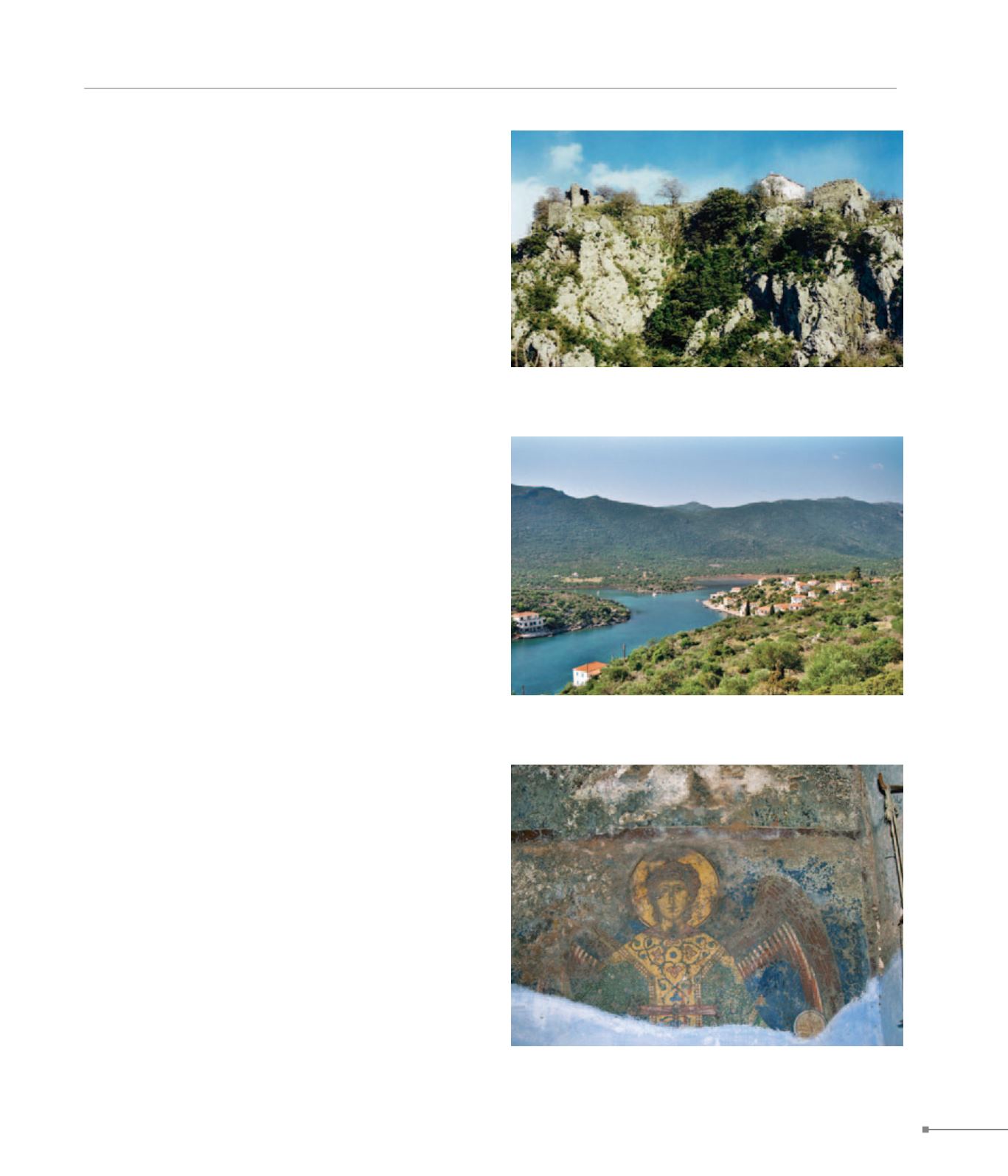
Charakas.
Ariana.
PELOPONNESE
223
299. Ariana, Taxiarch, mural painting (Αριάνα, Ταξιάρχης, τοιχογραφία)
298. Gerakas (Γέρακας)
295. Charakas, Palaiochora (Χάρακας, Παλαιοχώρα)
295.
Charakas.
The Palaiochora settlement lies E of the present-day village of
Charakas and preserves medieval remains, four ruined fortifi-
cation buildings, a tower, cisterns etc., as well as two barrel-
vaulted single-nave Byzantine churches: Prophet Elias with
wall-paintings (15th c.) and another unnamed.
296.
Pistamata.
At the Megali Riza site, SE of Pistamata, are the ruined, barrel-
vaulted, single-nave churches of Saint Constantine and Aghia
Triada.
297.
Reichia.
E of Reichia is the fortified hill of Kastri, with ruins possibly be-
longing to a settlement or monastery. SE of Reichia, at the Nipia
site, lie the ruins of a Byzantine church.
298.
Gerakas. Ierax.
Gerakas village is identified with the ancient city of Zarax, and
the present-day port. Due to its natural harbour, it has been
mentioned in written sources as an important maritime station
since the 9th c. Within the fortifications have been discovered two
ruined Byzantine churches – one a three-aisled basilica, a rec-
tangular structure known as “The Kings’ Palace”, and an above-
ground vaulted structure (funerary), possibly of Late Antiquity.
299.
Ariana.
The barrel-vaulted, single-nave church of the Taxiarch retains
fragments of wall-paintings of the late 13th c., while its narthex
and portico were added in the 14th c. Near this church are the
ruins of Saint Anne’s, from which the village’s name originates
according to tradition. The ruined barrel-vaulted, single-nave
church of Saint Paul is one hour W of Saint Anne’s and was
constructed on the nave of an Early Christian basilica. E of
Saint Paul’s is a cave with Early Christian and Byzantine pot-
tery. W is a cave-precipice named Vry, featuring Byzantine
pottery.


